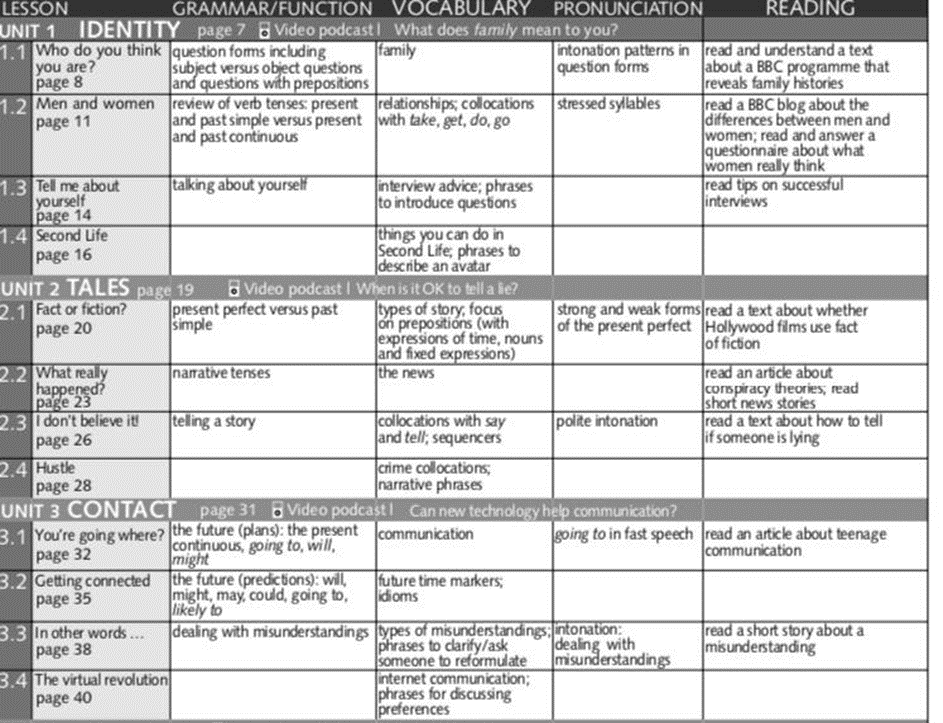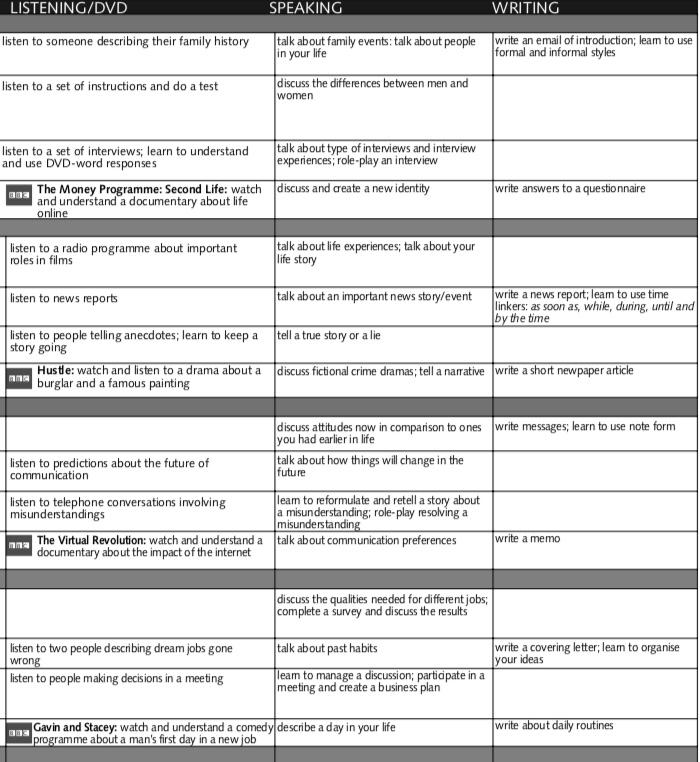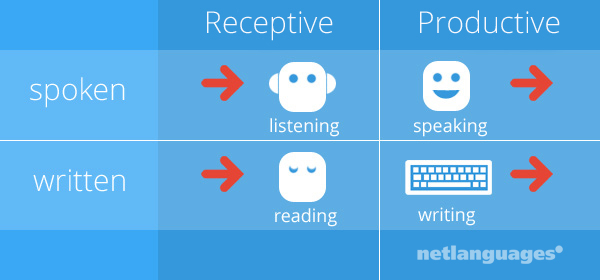Material Development
Current Approaches to Materials and Methods. Unit 2 of the coursebook. Presented by Özkan, S. N., Yıldırım, C., G., Altunöz, S., Daşdemir, P.
Teaching and learning have a common problem: communication. We can still use the old methods to improve the newer approaches, task-based learning. It will work as long as the we take how learners learn into account.
Courtesy of original creators. Notes and other additions are mentioned separately.
2.1 Introduction
Methodology and materials design that have influenced the changes and innovations in English Language teaching in recent years.
Communicative approach with its underlying principles as they constitute the foundation for the approaches and materials that have followed.
2.2 Communicative Language Teaching (CLT) and Its Influences
The communicative approach challenged the prevailing structural view of language and language teaching in the 1960s.
Innovated many aspects of course desiring, incorporating insights into language use, language learning and teaching from the 1970s to early 1980.
Some of the principles of the communicative approach have come to be an explicit or implicit part of English language teaching in the everyday professional lives of teachers in many parts of the world.
Communicative design criteria permeate both general coursebooks and material covering specific language skills as well as methodology of the classroom.


CLT Approach
A diverse set of principle that reflect a communicative view of language and language learning and that can be used to support a wide variety of classroom procedures (Richards and Rodgers, 2001:172).
Richards and Rodgers (2001) identify 3 stages.
In its first phase, a primary concern was the need to develop a syllabus that was compatible with the notion of communicative competence. This led to proposals for the organization of syllabuses in terms of notions and functions rather than grammatical structures (Wilkins, 1976).
In the second phase, according to Munby (1978), CLT focused on procedures for identifying learners’s needs and this resulted in proposals to make needs analysis an essential component of communicative methodology.
In the third phase, CLT focused on the kinds of classroom activities that could be used as the basis of a communicative methodology, such as group work, task-work, and information gap activities (Prabhu, 1987).
Implication 1
Wilkins proposed two categories of communicative meaning: notional (or semantico-grammatical) and functional.
Notions are rather abstract concepts—frequency, duration, dimension, location, quantity and so on.
Functions, refer to the practical uses to which we put language, most usually in interaction with other people.
How do teaching materials handle the relationship between grammar and communicative function?
If they followed a traditional grammar syllabus, how should functions be incorporated?
The same sentence could have various functions, depending on how it is used.
If the main spine of the syllabus is based on communicative functions, each function would involve different grammatical expressions.
The complex relationships between grammar and communicative functions may be too overwhelming for beginners or learners with low proficiency.
Implication 2
Real-world languages in use do not operate in a vacuum, and this is the second implication of the communicative approach.
Talking about language function and language form, there are other dimensions of communication to be considered if we are to be offered a more complete picture.
There are;
- Topics
- Context or setting
- Roles of people involved
Implication 3 (Error Types)
It is undoubtedly desirable that their language production should be as correct as possible, but we have seen that grammaticality also takes place in a wider social and communicative context.
| A: Give me a ticket to London! | |
B: Send me your prospectus! false | B: Please could you to send me your prospectus? true |
Concept of error is no longer limited to incorrect grammar or word choice. Being communicative involve context, roles, issues.
Implication 4 (Discourse - Coherence & Cohesive)
In recent years, a number of categories for describing language have been developed that are not based on sentence-level criteria, but on the broader notion of discourse.
How different parts of a text or speech of language are interconnected.
| The taxi driver | He |
| Two girls | They |
| “Which ice-cream would you like?” | “I like the pink one.” |
| cohesion |
Coherence is about whether a text as a whole makes sense or not.
Implication 5 (Four Language Skills)
The term communicative can in fact refer to all four language skills.
Productive, speaking and writing.
Receptive, listening and reading.
Oral/aural skills, speaking and listening.
Paper skills, writing and reading.
The giver and receive of a message is the means in which the information in a message is understood.

Languages seem to have inherent communicative as well as grammatical properties.
A communicative approach also implies a concern with behavior, patterns of interaction as well as linguistic content.
Morrow (1981)
- What: the contents of a language programme.
- How: the ways in which that content might be learned and taught.
Writing a letter, or an essay, or talking to a friend, at a meeting, to a stranger.
- CLT means not teaching grammar.
- CLT means teaching only speaking.
- CLT means pair-work, which means role play.
- CLT means expecting too much from the teacher.
Conclusion
The concept of being communicative includes what a language has the potential to mean, as well grammar properties.
Real-world language in use does not operate in a vacuum.
The communicative approach concerns with the error types.
A concept of communication does not have to be based on sentence-level criteria, it can allow language to be described, and language learning to take place, over longer stretches.
Communicative can in fact refer to all four language skills.
There is distinction between the what and the how.
2.3 Some Claims for Current Materials
When discussing developments in material design after CLT, an obvious question is whether the influences can be detected in current materials after many debates and the test of time. Nunan (1999: 2) thinks that “contemporary practice represents and evolution, and… the best practice incorporates the best of ‘traditional’ practice rather than rejecting it.”
“It enables you to learn English as it is used in our globalized world, to learn through English using information-rich topics, and to learn about English as an international language. … offers a comprehensive range of interactive digital components for use in class, out of class and even on the move. These include extra listening, video material and online practice” (Clandfield and Jeffries, 2010).
“With its wide range of support materials, it meets the diverse needs of learners in a variety of teaching situations an helps to bridge the gap between the classroom and the real world” (Clare and Wilson, 2011).
It is not difficult to identify some mainstream communicative themes in this selection authentic real-world language, diverse needs of learners, integrated skills, effective communication in various settings.
2.4 Organization and Coverage
- Multi-component Syllabus
Teaching materials following a traditional structural approach for instance and ordered list of grammatical items;
- simple present active.
- present continuous.
- simple past.
There is a single organizing principle that provides the material to be taught and learned in each unit or section of the course.
Learners will not be expected to learn just by formulating rules and manipulating structures.
They will be given a topic or situation to lean by practicing.
This way, learners can get the rules by experience. it is a very effective way to learn because rules is getting reusable.
Thanks to this, learners have advantages because they can learn grammar rules at the same time they can practice speaking, reading, listening.
A more straightforward way of looking at this kind of multi-component syllabus is to see it in terms of a merging of two broad approaches. One of these is concerned with a view of language in use, and includes categories of function, context and language skill. The other is aversion of a more formal linguistic syllabus, which comprises elements of grammar, pronunciation and vocabulary.
The Emphasis on Lexis
One of the areas that has recently received considerable attention in approaches to materials design is that of vocabulary or lexis.
Most of us have experience of classrooms where practicing vocabulary means learning lists of words, not always in relation to a real-world context and sometimes in the form of two columns, with a mother tongue equivalent for the foreign language word.
It is typical of many current coursebooks that they are concerned to rationalize vocabulary as content, in other words, to establish a principled framework and a set of contexts within which vocabulary development can take place, and to base teaching on an understanding of the psychological mechanism whereby people learn and remember lexical items.
The vocabulary sections appear as supporting parts in the sequence of integrated skills activities. The activities are meaning-focused and personalized. There is a lot of meaningful and varied exposure to lexical chunks in relation to personal qualities in roles in work or in life, which gradually prepare learners to achieve the target activity of the unit.
For most of us vocabulary also means using a dictionary.
It is based on an extremely large corpus of language of billions of words, stored on a computer database. Sources of data are both the spoken and written language, and include magazines, books, broadcasts, conversations and many more. The philosophy of the dictionary is to provide above all a guide to ordinary everyday English, and frequency of occurrence is a key criterion for inclusion. It focuses particularly on the most common 2000-3000 words, the powerhouse of the language, and the examples given in the dictionary entries are taken from the source material.
The Task-based Approach
Approaches to task-based learning (TBL) can be seen as a significant further evolution of CLT, both in terms of views of language in use and the development of classroom methodology.
J. Willis (1996: 23) offers a simple definition: tasks are always activities where the target language is used by the learner for a communicative purpose … in order to achieve an outcome. In other words, TBL is goal-oriented, leading to a solution or a product.
TBL approach is concerned with accuracy as well as fluency. It achieves this most obviously through the TBL framework, which has three key phases:
- The pre-task phase, which includes work on introducing the topic, finding relevant language and so on.
- The task cycle itself.
- Language focus.
Willis also offers an extensive set of suggestions for task possibilities, from simple to complex, and also shows how mainstream textbooks can be adapted to introduce tasks. A simple task may require learners just to make (e.g., the features of a famous place); more complex tasks may incorporate simulation and problem-solving, such as how to plan a dinner menu on a limited budget (Willis’s examples).
2.5 Learners and Learning
There are a number of ways in which coursebook design is concerned in general terms with a perspective on the learner, as well as with the language material itself.
Learners
Here is a small selection of themes taken from some of the coursebooks used as examples in the preceding section. You might like to consider whether such topics would be relevant for your own learners, and whether learning context determines topic choice. For instance, materials appropriate for students in an English-speaking environment—social situations, traveling, everyday survival—may not be applicable in other educational settings, and vice versa:
| Traveling | Shopping |
| School and studying | Music and singing |
| Food and drink | Health and illness |
| Dreams and fears | Television |
| Money | Racism |
| Relationship | Education |
Topics, of course, are by no means the only way in which attention can be paid to the learners themselves. Although for most teachers, especially those faced with big classes, the goal of large-scale individualization of instruction may not be a very realistic one, some differences between learners can be taken in to account in a limited way. Here we simply highlight the individual differences that appear to be significant in current materials.
| Personality | learners may be quiet, or extrovert, for instance |
| Motivation | learners may have chosen to learn; they may be obliged to take a course or an examination; they may or may not perceive the relevance of material |
| Attitude | learners have attitudes to learning, to the target language and to classrooms |
| Aptitude | some people seem more readily able than others to learn another language |
| Preferred learning styles | some learners are more comfortable in a spoken language situation, others prefer written material |
| Intelligence. |
Learning Processes and Strategies
Despite new ways of analyzing and describing language material, it took some time for our profession to turn its attention to the psychology of learning, particularly in relation to the comprehension skills of reading and, subsequently, listening. A test or translation method clearly tries to check that learners have understood a particular piece of language, but does little to develop techniques that can be transferred to other texts.
The reading skill, for instance, is seen in terms of a number of different sub-skills, such as reading for general information, scanning, skimming and so on. these sub-skills or strategies can then be used as the basis for specific tasks and exercises in a lesson.
It is important to note that comprehension is therefore no longer just a way of doing more grammar practice using a text, but opens up a perspective on psychological text-processing mechanisms.
The sub-skills of comprehension most frequently found are:
Reading/listening for the general idea, or gist. In relation to reading, this is sometimes referred to as skimming.
Looking for specific items of information (scanning for details).
Predicting or anticipating what is coming next.
Making inferences or deductions when a fact cannot simply be identified.
Most teachers are also concerned with the conscious skills their students need in order to learn as efficiently as possible. With this in mind, we find that increasing attention is being paid to two related areas. The first of these is usually referred to under the heading of study skills, the second of learning strategies.
Study skills can be thought of as a range of learnable and practical techniques that help students to adopt more effective methods of study.
In terms of general English coursebooks, study skills have a more restricted scope.
The second area, learning strategies, owes to research that analyzes the components of successful language learning and offers definition of a good language learner.
Success is thought to be based on such factors as checking one’s performance in a language, being willing to guess and to take risks with both comprehension and production, seeking out opportunities to use strategies, developing efficient memorizing strategies, and many others.
2.6 Related Developments
Firstly, we are seeing a dramatic spread of English as a lingua franca or world Englishes (Graddol, 2006, 2010; Kirkpatrick, 2010; Jenkins et al., 2011).
English as a lingua franca is currently seen as a common currency, as it were, to enable communication at global level, be it fact to face or through digital means.
Conclusion
Learning a word is a part of learning a new language. That’s why, when we learn a word, we should use effective and efficient way to learn. Learning a new word should include topic and contexts to learn better.
- Task-based approach and its goals
- Task-based approach aims to speak communicatively through tasks.
- The perspective on the learner, learning contexts and individual differences.
- The significance of individual differences in current materials.
- The sub-skills of comprehension.
- Study skills and learning strategies are linked to increasing attention.
- The current literature on learning strategies has grown enormously in recent years, covering strategies and skills.